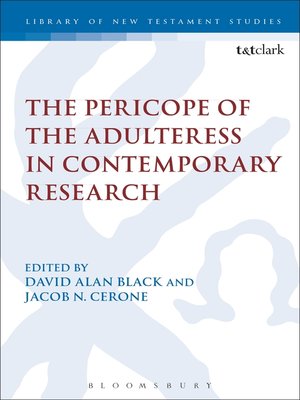The Pericope of the Adulteress in Contemporary Research
ebook ∣ The Library of New Testament Studies
By David Alan Black

Sign up to save your library
With an OverDrive account, you can save your favorite libraries for at-a-glance information about availability. Find out more about OverDrive accounts.
Find this title in Libby, the library reading app by OverDrive.



Search for a digital library with this title
Title found at these libraries:
| Library Name | Distance |
|---|---|
| Loading... |
The contributors to this volume (J.D. Punch, Jennifer Knust, Tommy Wasserman, Chris Keith, Maurice Robinson, and Larry Hurtado) re-examine the Pericope Adulterae (John 7.53-8.11) asking afresh the question of the paragraph's authenticity. Each contributor not only presents the reader with arguments for or against the pericope's authenticity but also with viable theories on how and why the earliest extant manuscripts omit the passage.
Readers are encouraged to evaluate manuscript witnesses, scribal tendencies, patristic witnesses, and internal evidence to assess the plausibility of each contributor's proposal. Readers are presented with cutting-edge research on the pericope from both scholarly camps: those who argue for its originality, and those who regard it as a later scribal interpolation. In so doing, the volume brings readers face-to-face with the most recent evidence and arguments (several of which are made here for the first time, with new evidence is brought to the table), allowing readers to engage in the controversy and weigh the evidence for themselves.
Readers are encouraged to evaluate manuscript witnesses, scribal tendencies, patristic witnesses, and internal evidence to assess the plausibility of each contributor's proposal. Readers are presented with cutting-edge research on the pericope from both scholarly camps: those who argue for its originality, and those who regard it as a later scribal interpolation. In so doing, the volume brings readers face-to-face with the most recent evidence and arguments (several of which are made here for the first time, with new evidence is brought to the table), allowing readers to engage in the controversy and weigh the evidence for themselves.







